Can a VFD Convert Single-Phase Power to Three-Phase?
Using VFDs To Convert Single-Phase To Three-Phase
One of the most common calls we receive at VFDs.com is asking about phase conversion: Can a Variable Frequency Drive (VFD) convert my single-phase power supply to run a three-phase motor? Many who call us are looking at the ability to combine phase conversion and speed control in one device and like the potential to save money, hassle, and space. Like most things, however, there is not a simple answer to this question.
Single-phase AC power is common in many residential and agricultural settings, although it can also be seen in some industrial locations. It typically will only have two phases (L1 & L2) and possibly a neutral. It is common to see single-phase power for 120, 240, and occasionally 480 VAC systems. Three-phase supplies have three phases (L1, L2, & L3). Three-phase power in the United States is typically 240 and 480 VAC systems. There are some instances where up to 600 VAC systems are used as well.
Many people run in to problems with phase conversion when they get a new or used motor and find that the three-phase motor doesn’t play well with their single-phase power.
Yes, a VFD can power a three-phase motor with a single-phase input power supply, but phase conversion introduces many considerations that normally don’t factor in to buying a VFD. In this article we will dig in to VFDs that are built to convert single-phase to three-phase, how to use a regular VFD when custom VFDs are not an option, and other options for phase conversion when VFDs are not the best choice.
Single-Phase Input VFDs
Many manufacturers have lines of VFDs built to input single-phase power and output three-phase power. For example, the Galt G200 series and Mitsubishi D700 & E800 series all have VFDs that come from the factory ready to operate on single-phase input power and create three-phase output power to run an induction motor.
In fact, the VFDs that are designed this way aren’t able to input three-phase power at all. This is because the AC power input only has two available terminals for the hot wires and therefore can’t take the additional wire required for three-phase input.
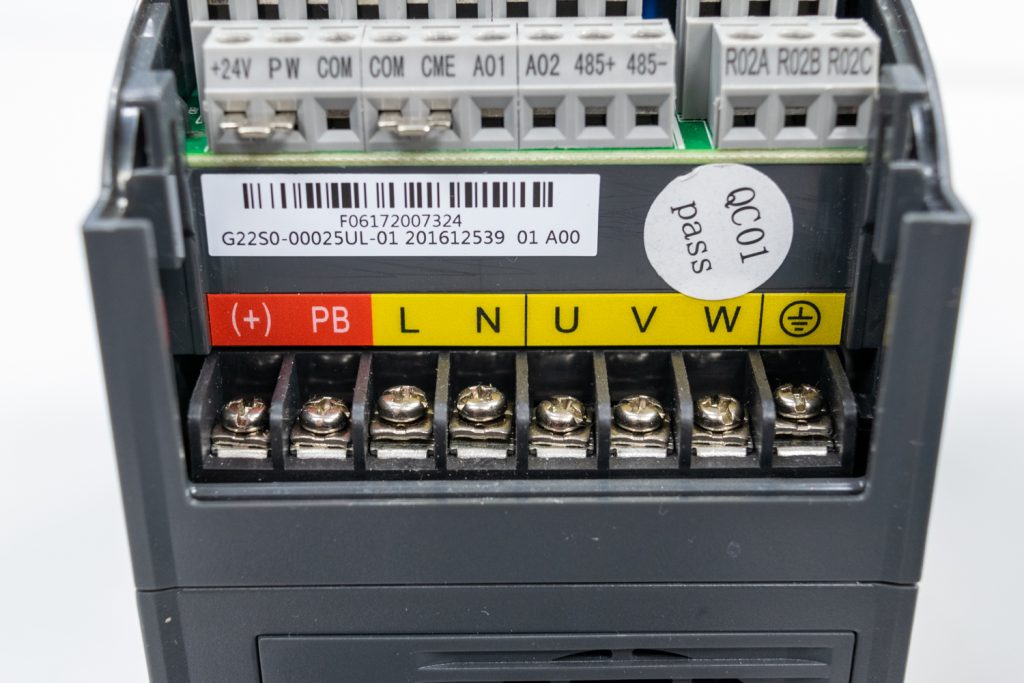
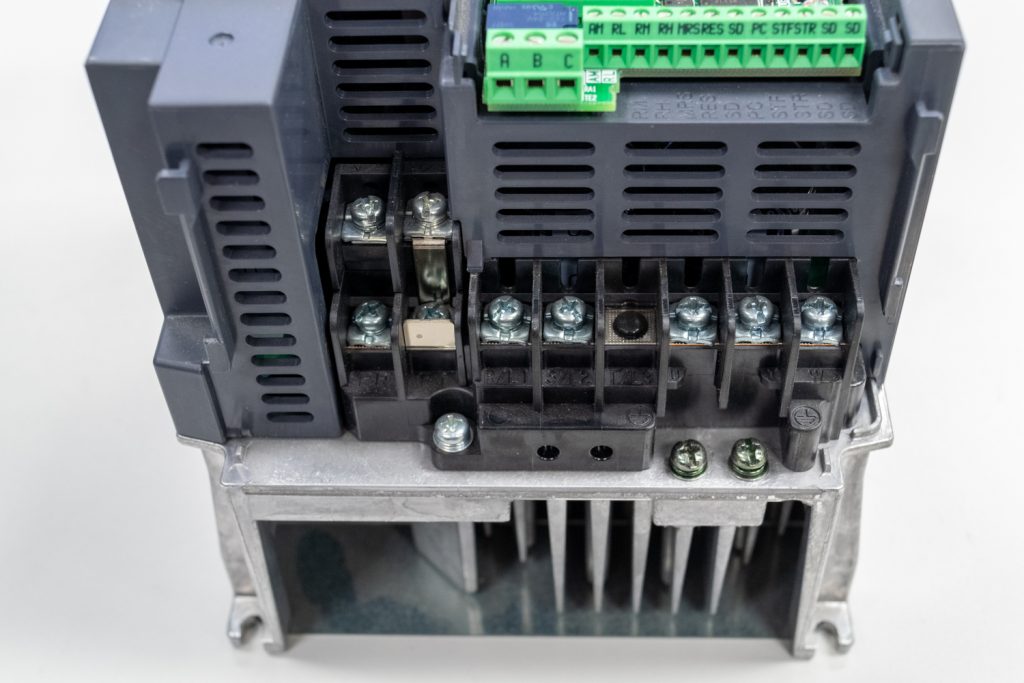
If what you need is a VFD that is ready off the shelf to convert single-phase to three-phase, this is often a great option for you. These VFDs are rated and sized based on the output three-phase current rating of your motor, making them simple to size correctly and easier to install.
One drawback to VFDs that are set up this way is that they typically only run smaller motors. Both the Galt and Mitsubishi lines mentioned above only go up to 3 horsepower when set up for single-phase input, which limits the applications they can be used on.
Another problem is if the site ever updates to three-phase power. Although the cost of switching the entire system to three-phase power makes it unlikely to happen very often, if it does happen then these VFDs are not able to function on a three-phase system. These VFDs tend to be cheaper than most, but it still is a shame to throw them out if they become obsolete.
Using Standard VFDs for Phase Conversion
If your motor is too large for VFDs built for phase conversion, it is possible to use a standard VFD for your single-phase power supply. This is done by putting the two hot wires for single phase on the AC input for the VFD and leaving one input terminal open and unused. This does raise a few problems that you have to factor in.
Because you are now concentrating the same amperage on two phases instead of three, failure of your VFD’s input diodes is likely to happen. To resolve this issue, you have to oversize the VFD to account for larger ampacities. A conservative rule of thumb is to double the size of the VFD you need.
For example, if your motor Full Load Amps (FLA) is listed at 15, double that and size a VFD as if you needed to power a 30-amp motor. If you’re confronted with this situation, we recommend you call the one of our experts who can help walk you through this sizing process and find the correct VFD for you.
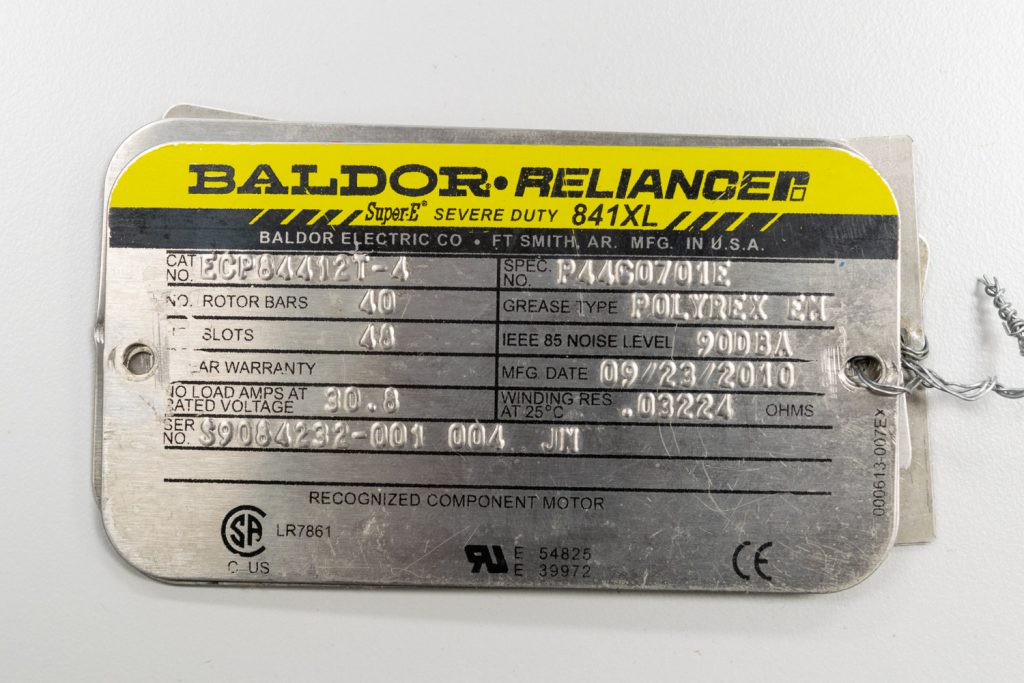
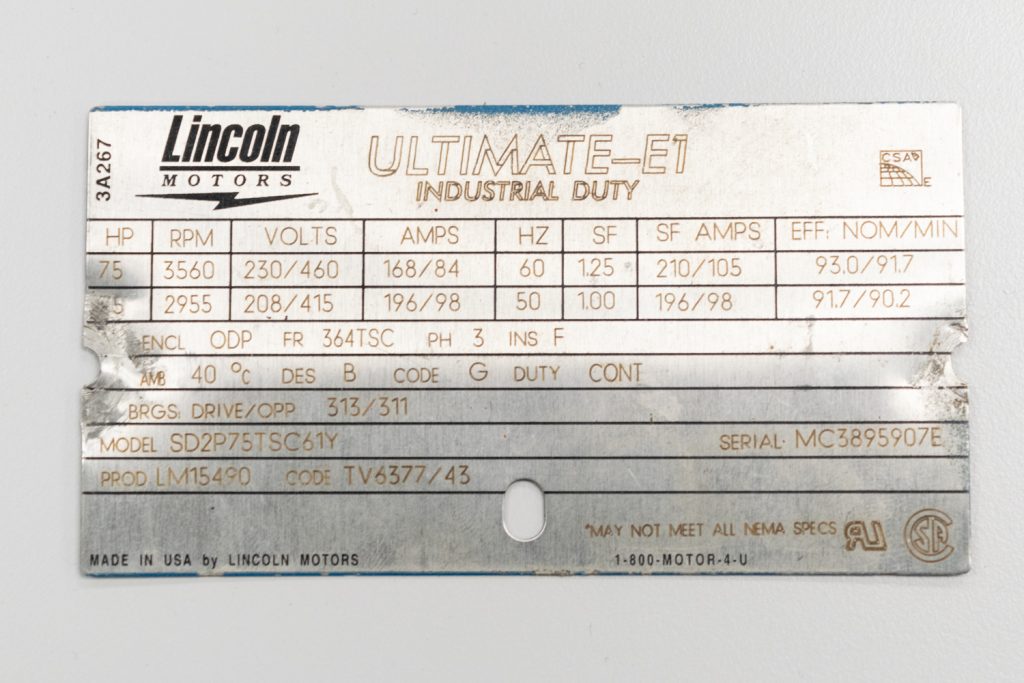
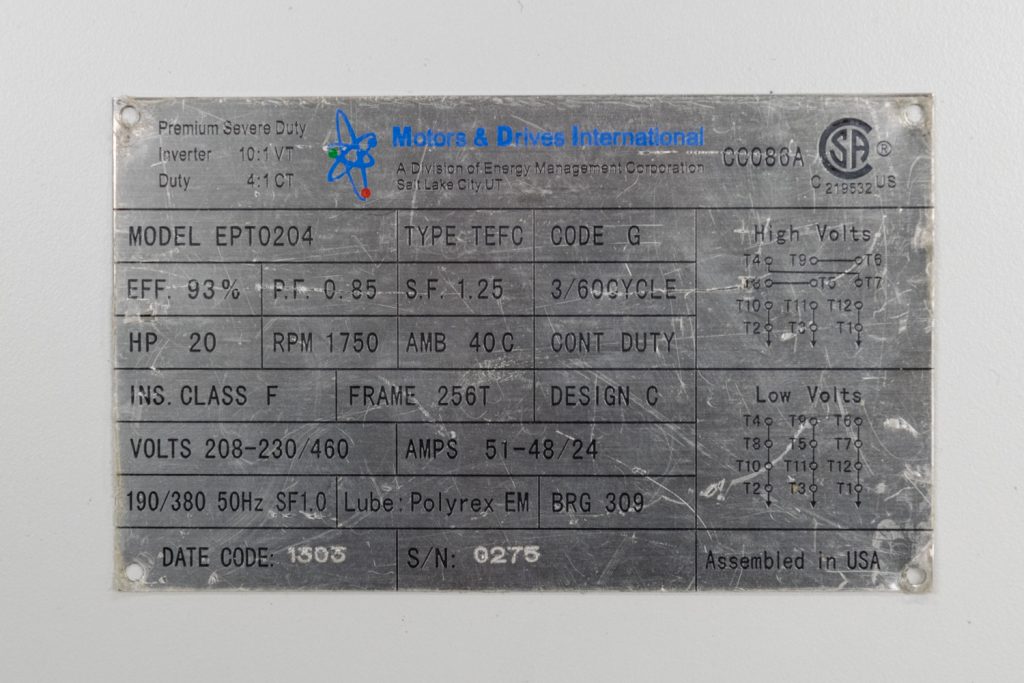
This process of de-rating a standard VFD does have some drawbacks. Compared to powering a three-phase motor with a three-phase input, you are buying a much bigger drive, which means more money and space. We always recommend to try and use a three-phase power source to power your motors if possible, but sometimes that is not an option.
Another issue to consider is how this use affects warranty. There are many VFD brands, and whichever one you choose will likely have its own warranty policies. If using a VFD this way voids your warranty, you may want to consider other options.
What About Voltage?
Along with mismatched phases on the input and output of a VFD, there’s often a mismatch of voltage. This may happen as systems are upgraded, components are replaced, or when you’re designing a new system with parts you already own. The best practice is to make sure that VFD and motor systems have the same voltage throughout all of the equipment, but it may not always be possible. We’ll often see systems with 120V single phase power supplied but a 240V three phase motor, or a system with 240V single phase power and a 480V three phase motor. The phase conversion aspect has already been covered, but what about the voltage mismatch?
Can a VFD transform voltage? The general answer is no. VFDs cannot create voltage, meaning they can’t bring in a lower voltage and output a higher voltage. It is possible that a VFD can take in a higher voltage and output a lower voltage, but in that case you will experience more amperage to get the same horsepower from the motor. It also raises a lot of red flags and isn’t a best practice for simple, well-designed systems. It shows that there may have been design errors for how the components work together that may cause other issues.
In some cases, you might have a motor that solves the issue for you. Many modern motors are rated for both 230V and 460V. If your system has historically been using 460V but now has 230V supplied, your motor might still be able to work at the same horsepower but have a new amperage rating with the adjusted voltage. In that case, you may need to wire the motor differently and supply a new and larger VFD, but make sure you identify the new FLA of the motor you need to match.
In general, the best rule is that if your voltage changes, a VFD is not the best solution to address that change. Use a transformer to get to the voltage you need or replace all the equipment in the system to match the new voltage. Transformers are typically only built into small, niche drive lines like the Galt G21S or the Mitsubishi D710W drives, or else on large, custom medium voltage drives. In these cases, look at the VFDs themselves and look at both the input and output ratings to make sure it matches your needs.
Other Phase Conversion Options
There are cases where VFDs are not the best option to convert phase. One of the most common problems we see with VFD phase conversion is that someone is trying to convert single-phase to three-phase for more than just a motor. While a VFD will do well at converting phase for an AC motor, it won’t work right at converting power for the peripheral devices you’re also trying to run, often including things like relays, lights, control power transformers, and other electronic devices.
If you are also not looking to control the speed of a motor, you will end up paying for a lot of functionality in a VFD that you won’t use. VFDs are primarily used to control the speed of a motor, so if you want a motor to run at full speed all the time, you might be over-engineering your system.
In cases like these, you should look at phase converters. There are several types, each with their positives and negatives. Static phase converters are a very budget-friendly option, but typically won’t run a motor at its full rating. Rotary phase converters do a great job of converting power, but have moving parts and create a lot of noise. Digital phase converters tend to perform best at getting the full rating out of a motor while converting phase, but are a more expensive option.
What Now?
Each electrical system has many factors to look at when you start venturing in to phase conversion. What’s most important is that you identify what you need and what matters to you, then build a system around that. If you need help doing this, our experts are available to help you walk through this process by phone (800) 800-2261 or send us a message here. Reach out now and we’ll help you identify the best way to convert phase in your situation.
